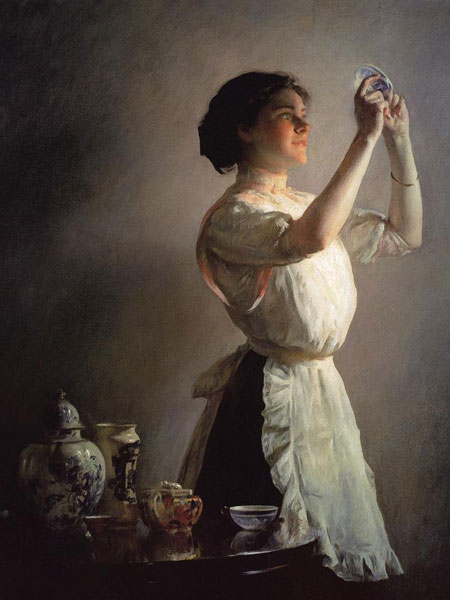Old Fashioned Aprons
Can you remember the first apron you ever had? Mine was dark pink with flowers and white trim. It had Velcro fastenings, so that I could do it up myself. And it was an apron, not a bib. My aunt had made it for me, because I considered myself too old for bibs, but I still needed something to protect my clothing at meal times. I didn’t regard an apron as being in the same class as a bib at all. An apron was a wonderful, grown up piece of clothing out of Little House on the Prairie. I was happy to wear it, and incidentally my clothes were better covered than they would have been by a bib, anyway.
The tradition of aprons has been handed down to us from centuries past. It spans many different cultures, and is a practical solution to difficulties we all face today. Even though aprons have disappeared from our daily wardrobes, they continue to have a role today, especially in the kitchen. There is no better way to protect against stains or spills when chopping vegetables, stirring soups, or working with grease or flour. Cooking aprons come in all shapes, sizes, colours, and patterns. Personally, I prefer the ones where the ties go around the neck, or cross at the back, since these seem to stay on better than the kind with shoulder straps.
Kitchen aprons generally have a top piece, or bib, to use the offensive word! Half aprons, with only a waist band and skirt, can be used in other ways around the house. A neighbour recently gave us a whole set of this style. Some are coloured material, and others are white with flowers, which are painted on with a special fabric paint. They are almost too pretty to use for cleaning! But we have found them great for avoiding splashes, especially when scrubbing sinks or bathtubs.
Another venue for aprons would have to be in the garden. I can’t say that I have ever tried this myself, but as I was writing this post it occurred to me, why don’t we use aprons for gardening? Wouldn’t they be a convenient and time-saving solution, especially for cutting flowers or picking vegetables? And when an apron gets dirty, you just untie it and throw it in the wash! I have found even carrot stains come out of an apron much better than I would have expected.
The great thing about aprons is that they are very easy to come by. Not only is there a wide variety available everywhere from dollar stores to craft boutiques, but aprons are also a great sewing project, even for beginners. They are smaller and less intimidating than other clothing projects. Many apron patterns only require straight seams. And the project is satisfying because it produces something you will wear again and again. Homemade aprons are also a great idea for gifts. The only difficulty can be convincing the receiver to run the risk of getting a stain on a brand new apron by using it.
I enjoy tying on a fresh, clean apron when I am starting a project. It seems to set things off on the right foot. A new apron, and a clean counter, and putting away the ingredients as soon as you are finished with them … everything seems to run better when you are wearing an old fashioned apron while you work.


Not to mention aprons for the elderly or disabled. I saw a really good idea for people who resist wearing an apron per se. For men the front part of a flannel shirt with the collar still attached, or for women a pretty blouse front.
Great idea April, thanks for sharing with us.